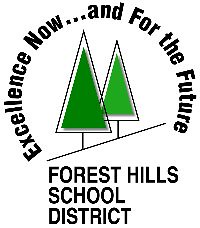Bring Your Own Technology at Forest Hills District
By Cary Harrod, Instructional Technology Specialist
Forest Hills School District, Cincinnati, Ohio.

I jumped at the chance to write about our BYOT (Bring Your Own Technology) program for AALF; AALF's goal, "to ensure that all children have access to unlimited opportunities to learn anytime and anywhere and that they have the tools that make this possible" reflects the very premise of our program. Like many school districts throughout the country, the Forest Hills School District, a K-12 public school just outside of Cincinnati, Ohio, has spent the last 5-10 years looking for ways to increase access to technology for all students. We've focused our efforts on purchasing netbooks, notebooks and tablet pcs which are housed on mobile carts. We've also run a few small iPad and iTouch pilot projects to help us gain a broader view of the potential of these devices to support and enhance student learning.
Along the way, we spent enumerable hours exploring the possibility of a 1:1 laptop program but ever-shrinking budgets have all but dashed any hope of launching and sustaining such a program. Unwilling to throw in the towel, we continued researching other options and in April 2010, our School Board approved the "Partnership for Powerful Learning" pilot project. A six-month action research project slated to launch in January 2011, all seventh grade students will be permitted to use their personally owned netbook, notebook or tablet pc throughout the school day. Our ultimate goal? To increase access to technology for all students.
The preparation for this pilot project has been extensive and well thought-out. As the name of the project suggests, we are partnering with students, teachers and parents to help ensure the successful launch of this program. The creation of a parent voice group, along with three meetings specifically designed to help parents understand the program have been organized and delivered over the past six months. One of the parent meetings, entitled, "It's all about the Learning", gave parents a glimpse into the many ways in which technology can create multiple paths for learning, thus better meeting the needs of all students.
Staff members have spent the school year thus far in a professional development sequence that will ultimately deepen their understanding of how to authentically weave technology into the curriculum to create engaging and powerful learning experiences. After looking at the enormous shifts occurring in the world around us, we set our sights on understanding how to create dynamic, engaging hubs of learning that are student-centered, personalized and connected to the real-world, often made possible through the use of technology. In an effort to replicate the real world, one of our goals is to equip students with the knowledge of how to analyze tasks, to choose the most appropriate tool and then use it appropriately to enhance learning.
Finally, how will the BYOT program impact the third spoke of our partnership--the students? If students are to "own the learning", it is imperative that they have many opportunities to become full participants in designing their learning experiences. In January, students will attend CampL which stands for "Conversations about My Personal Learning". We've created an experience which fuses a traditional conference with a more unconference approach; students, parents and staff members will come together as co-learners as we talk about ways in which technology can support learning.
Of course, no story is complete without a few bumps and yes, we have encountered a few potholes along the way. No doubt putting a variety of devices in the hands of students throughout the day is causing us to re-imagine teaching and learning in a big way. I like what Dean Shareski had to say about this topic in his recent blog post entitled, "1 to 1 Laptop Programs are so 2007":
"So while the mish-mash of technology may prove to be challenging for teachers and IT staff to manage and control, in the end this isn't about management or control of learning. It's about helping students use the tools and gifts they have at their disposal, maximizing that potential and showing them new possibilities as well."
The other big concern has been the issue of equity. How do we get devices into all students' hands? Donations, low interest loans and sponsorships are but a few of the possibilities we are looking into as we move forward with this project. Recently, I have had a number of people tell me that we're "bold" and "brave" for stepping into the BYOT waters. It's at that point that I recall one of my favorite quotes from Seth Godin's book, Tribes:
"It's not an opportunity, it's an obligation. I don't think we have any choice. I think we have an obligation to change the rules, to raise the bar, to play a different game, and to play it better than anyone has any right to believe is possible."
If you would like to find out more about our program, please see our website at http://fhsdppl.wetpaint.com
Cary Harrod is the Instructional Technology Specialist for the Forest Hills Schools, a K-12 public school district located in Cincinnati, OH. Prior to this role, she spent nine years as a third and fourth grade teacher and ten years as a gifted specialist. She is currently finishing up her Masters Degree in Instructional Media. Her ultimate goal is to help teachers re-imagine and foster learning environments that are authentic, relevant, student-directed and highly personalized.






